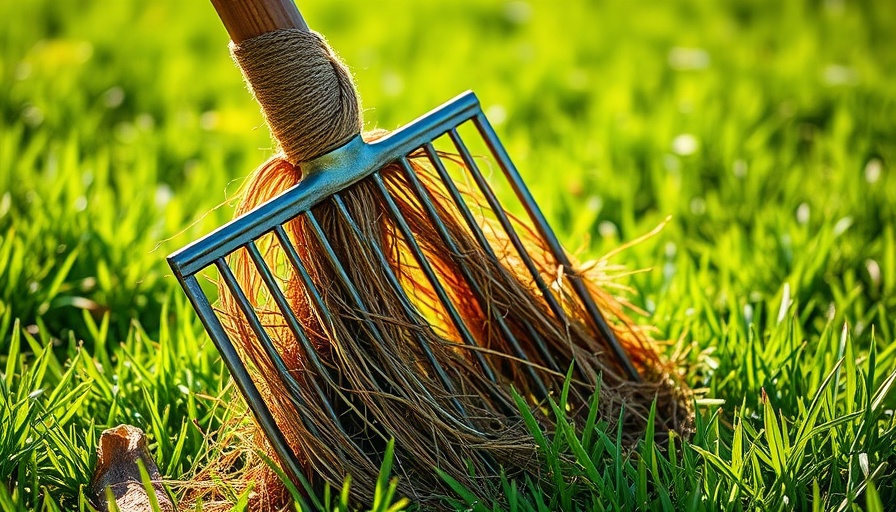
Why Dethatching is Essential for a Thriving Lawn
Maintaining a healthy lawn is crucial for image-conscious homeowners and service providers alike. Dethatching, the process of removing dead grass and organic debris, is essential for allowing your grass to breathe and absorb water. A thatch layer over 1/2 inch thick creates barriers, making it difficult for grass roots to access vital nutrients. As such, identifying the right times to tackle this task can ensure that your garden thrives, especially before or during spring.
How to Recognize the Need for Dethatching Your Lawn
Signs you're due for dethatching include unsightly brown patches, sluggish growth, and a spongy feeling underfoot. Another way to gauge your lawn's needs is by checking for areas where the blade of grass seems to struggle without proper nourishment. Remember, dethatching isn't an annual chore; most yards will benefit from it every couple of years.
Choosing the Right Equipment for Your Lawn Size
For homeowners managing average yards, a simple rental of a power dethatcher could save both time and storage hassles. Professional service providers might consider investing in more advanced equipment, making yard upkeep a seamless part of their services. When selecting tools, also consider that for smaller areas, handheld rakes may suffice.
Practical Tips for a Successful Dethatching Experience
Start with cutting the grass to about half its usual height, which liven-ups the environment for efficient dethatching. If you opt for a powered dethatcher, ensure to make perpendicular passes across your yard. This method maximizes efficiency and mitigates the chances of damaging the grass.
Your Next Steps for a Beautiful Lawn
Now that you know the basics of dethatching, why not gather your tools and give your lawn the love it deserves? A routine upkeep not only enhances your property’s curb appeal but serves as a valuable investment—a well-kept lawn can boost property value. If you're unsure where to start, consider researching local services for assistance.
 Add Row
Add Row  Add
Add 




Write A Comment